How to Build a Wildfire-Smoke Air Filter for $150
This article originally appeared on Outside
New York, and other major cities on the eastern seaboard are currently blanketed in smoke from a massive outbreak of wildfires in Canada. Air quality levels are reaching their worst ever recorded values, threatening the health and safety of millions of people. Here's an affordable, easy method for removing smoke particles from any home, business, or other enclosed space that you can build in just a few minutes.
Why Wildfire Smoke Is Bad for You
Wood smoke contains fine particles of unburnt wood. That may not sound very toxic, but reduced in size to 2.5 microns or less (a human hair is 50-70 microns thick), microscopic wood particles become toxic. Wood smoke also contains benzene, formaldehyde, acetaldehyde, acrolein, and polycyclic aromatic hydrocarbons (PAHs).
To effectively remove smoke particles from the air, you need a filter capable of removing particles smaller than 2.5 microns.
Smokey conditions continue to shroud the sun as it rises behind lower Manhattan and One World Trade Center in New York City, Wednesday morning #newyorkcity #nyc #newyork #sunrise @agreatbigcity #smoke pic.twitter.com/9wm3QQAU9W
— Gary Hershorn (@GaryHershorn) June 7, 2023
Why You Can't Just Rely on Your HVAC System to Filter Wildfire Smoke
Installing a PM2.5 filter will clean smoke particles from any air passing through your central air conditioning or heating system. But, air also enters a building through doors and windows. And many apartments and older homes in the northeast aren't equipped with central A/C. Residents of larger buildings may not have access to their HVAC systems, and no means to ensure filters are of adequate quality. This device will improve the air quality of any space it’s operated in.
Opt to Build a Corsi-Rosenthal Box--Here's Why
What we're building here is called a Corsi-Rosenthal Box. It will actively filter air inside any building, removing a significant amount of harmful substances, drastically improving the quality of air occupants breathe.
"This type of highly-accessible public health intervention can empower community groups to take steps to improve their air quality and therefore, their health," concludes a study conducted by Brown University into the effectiveness of Corsi-Rosenthal Boxes. That study found that using such a box could reduce the concentration of particles of a similar size to those found in wood smoke by 30 to 60 percent.
As built here, a Corsi-Rosenthal Box can provide five full air changes inside a 500 square foot room in one hour.
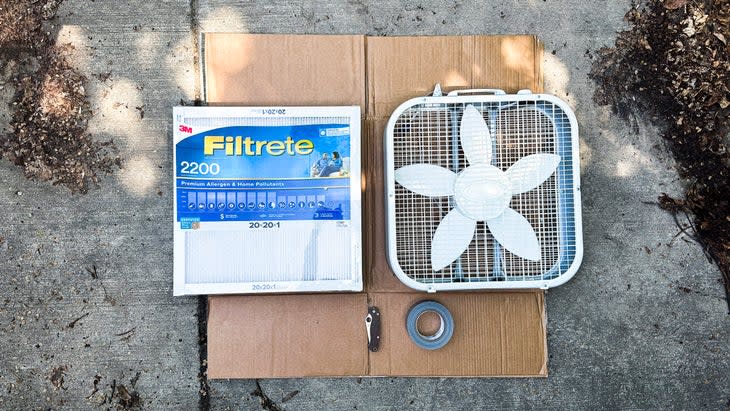
The Supplies to Make Your Own Corsi-Rosenthal Box Air Purifier
One box fan (preferably 20 inches)
Four PM2.5 air filters (preferably 20×20 inches)
Duct Tape
Knife
Cardboard
I visited a local Ace Hardware and bought a 20-inch box fan, four PM2.5 20×20 filters, and a large roll of duct tape for $156.54. The cardboard came courtesy of an Amazon shipment, and the knife I already had in my pocket.
You can also use cheaper, less effective air filters, but they will not be as efficient at improving air quality. If you can't find a 20-inch box fan, or already own one of a different size, then matching filter dimensions to those of the fan can help make assembly easy, but with enough duct tape and patience, you'll be able to make different size filters and fans work just fine.
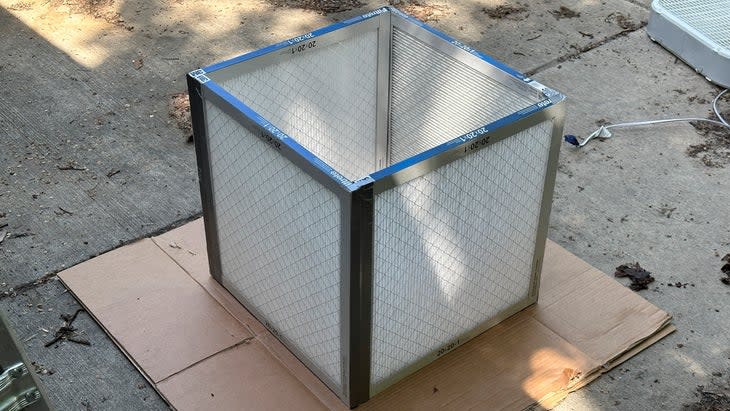
Step One: Tape the Filters Together
Using the duct tape, just tape the sides of the filters together to form a cube. You're trying to create a seal here, so fully cover the corners with the tape.
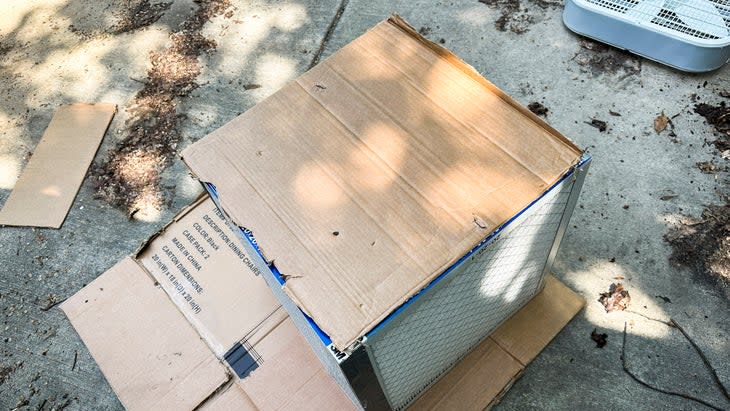
Step Two (Optional): Add a Cardboard Base
Taping a piece of cardboard to what will become the bottom of that filter cube can help make the entire structure more durable, and easier to move. It also helps seal the bottom of the cube, forcing air to pass through the filters.
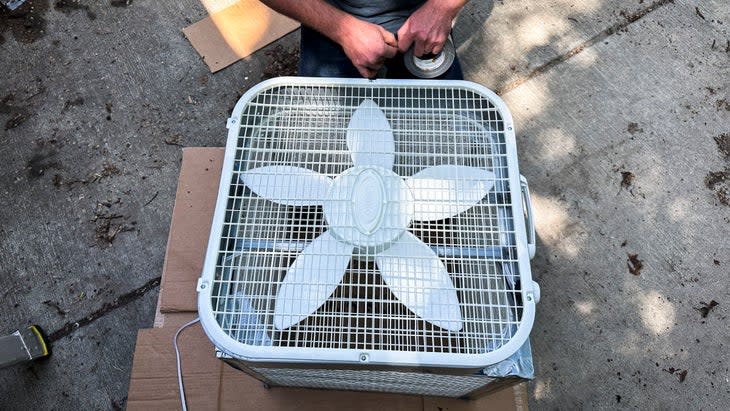
Step Three: Connect the Fan
Place the fan atop the open end of the filter cube so that it will pull air through the box, and blow upwards towards the ceiling, then connect it to the filters with the duct tape, taking care to seal all gaps. There's no need to be careful here, just slap on duct tape until no gaps are visible between the the filters and the fan body.
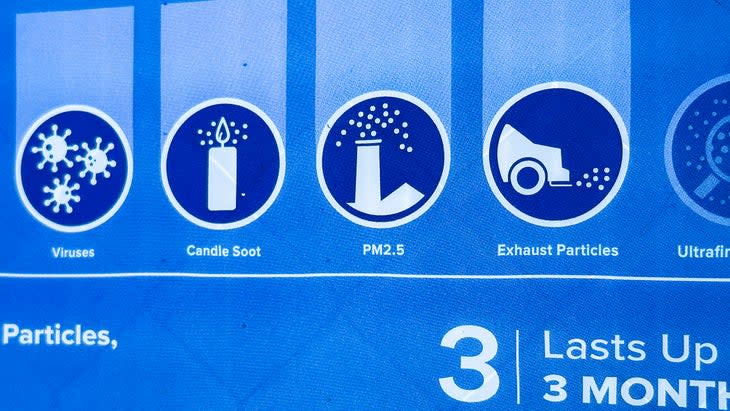
Step Four: Plug It in and Forget It
Place your new air purifier inside the room or building you want to scrub, with at least one-foot of clear space between the filters and any walls, furniture or other obstructions. Plug the fan in, turn it on, and leave it on.
Those PM2.5 filters should be good for up to three months of continuous use. Replace them at those intervals, or any time they become visibly dirty.
Editorial Disclaimer: The Corsi-Rosenthal box is not a substitute for high-quality protective masks. Use of this, or any other air cleaner should be a supplement and not a substitute for wearing a mask. Use of a high-quality masks, particularly N95 and KN95, is the most effective way to protect your respiratory system.
All photos: Stuart Palley
For exclusive access to all of our fitness, gear, adventure, and travel stories, plus discounts on trips, events, and gear, sign up for Outside+ today.

